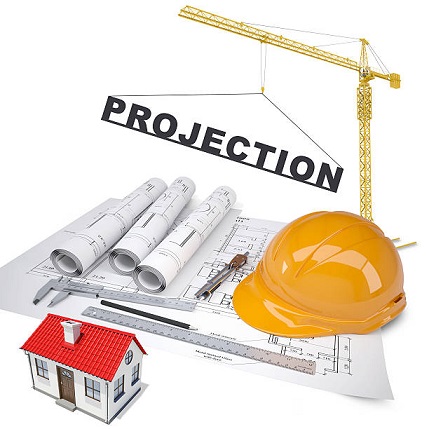Sydney, Australia’s vibrant and bustling city is present process regular exchange in its urban panorama. As the town grows and develops, so does the need for new creation, renovations and upgrades. However, the process of acquiring constructing permits in Sydney is a big complexity in urban planning and production. In this newsletter, we’ll discover Sydney’s constructing sees eye to eye, their importance, the application method, key policies and their largest implications for the metropolis’s growth.
The Significance of Building Approvals
Building approvals in Sydney are a pivotal component of the city’s urban planning framework. They are designed to ensure that new constructions and renovations adhere to essential safety standards, environmental regulations, and zoning requirements. The Sydney building approvals process serves multiple crucial purposes:
Safety: The number one motive of constructing permit approval is to protect the safety of citizens and the broader community. Ensuring that buildings follow building fireplace protection codes is of extreme importance.
Environmental Sustainability: Sydney locations amazing emphasis on environmental sustainability. Building approvals typically include requirements for strength efficiency, water conservation and environmentally pleasant use.
Town Planning: Building allow approval is an critical a part of metropolis making plans. They help manipulate and control the town’s boom, making sure that new buildings align with the town’s long-time period vision.
Property value: Property value can be increased by complying with building permits. Typically, buyers and tenants look for properties that meet safety and environmental standards.
The Application Process
Obtaining building consent in Sydney requires a structured and comprehensive application process. Here are the basic steps:
Preliminary consultation: It is advisable to consult with the local council or private certifiers before applying. This covers the details of the project, potential challenges, and required documentation.
Development Application (DA): The first formal step is to submit a Development Application (DA) to a local council or recognized private certificate authority. The DA includes construction plans, environmental assessments, and other related documents. The councilors or certifiers review the DA against local planning controls and legislation.
Public Notice: Depending on the scale and nature of the development, a public notice technique may be vital. It lets in close by human beings and stakeholders to be knowledgeable approximately the process utility, as well as their reviews and remarks.
Review and approval: The DA is reviewed through the council or personal certifier, contemplating factors along with nearby code compliance, environmental, protection and aesthetic concerns. If the notion meets all of the requirements, it’s miles authorised, sometimes issue to sure situations.
Construction Certificate: A Construction Certificate (CC) must be acquired after obtaining DA approval. CC confirms that the building plan complies with the Australian Building Code and other applicable standards.
Construction: With DA and CC in hand, construction can begin. During construction, building inspectors or council officers may need to carry out inspections to ensure compliance with approved plans.
Certificate of Operation: On completion of construction, an Operation Certificate (OC) is issued. This proves that the building is safe for anyone to live in.
Key Regulations and Standards
Several regulations and standards govern building approvals in Sydney:
The Building Code of Australia (BCA): The BCA sets minimum requirements for the safety, health, structural efficiency and environmental sustainability of buildings in Australia BCA compliance is the cornerstone of the consent process.
Environmental Initiatives (EPIs): These are legal instruments that guide land use and development in specific areas. The EPI covers zoning, property protection, environmental protection, and other planning considerations.
Local Environmental Plans (LEPs): LEPs are a subset of EPIs that apply to specific local government areas. They offer comprehensive program management tailored to the needs of each community.
Development Control Plans (DCPs): DCPs offer extra steerage on unique factors of improvement, which includes building layout, landscaping and sustainable development.
State Environmental Policy Programs (SEPPs): SEPPs are programs installed through country governments to deal with large coverage troubles, inclusive of low-cost housing, infrastructure, and belongings as they’ll be preserved.
Implications for Sydney’s Development
The approval of the building also has significant implications for the development of Sydney. As the city expands, several highlights emerge:
Sustainable Development: Building consent is the driving pressure behind Sydney’s commitment to sustainable improvement. Adherence to environmental requirements and using eco-friendly substances make a contribution to the eco-friendliness of the city.
Urban density: Sydney’s building approvals affect the city’s boroughs. Mass development, especially around parking, aims to accommodate the city’s growing population and reduce urban sprawl.
Infrastructure: Infrastructure is often required to be designed and upgraded before a building is approved. This includes improving public transport, roads and infrastructure to support population growth in newly developed areas.
Cultural and architectural diversity: Sydney’s multicultural character is reflected in its architecture. The role of building permit approval is to ensure that the city’s architecture remains diverse, both in terms of cultural heritage and contemporary architecture
Economic development: Driven by building permit approvals, the construction industry makes a significant contribution to Sydney’s economy. It creates job opportunities, stimulates local businesses and drives economic growth.
Challenges and Considerations
Despite the many benefits of building approvals, several demanding situations and issues need to be stated:
Regulatory Complexity: The regulatory framework governing constructing approvals may be complicated and might vary from one nearby government place to some other. Navigating these regulations can be hard for assets developers and developers.
Approval Delays: The approval procedure may be time-consuming, leading to delays in venture graduation. Delays may result from public objections, adjustments to plans, or high call for for council exams.
Cost Implications: Complying with policies and standards can add to the general price of construction. Meeting electricity efficiency and sustainability necessities, as an instance, may additionally require additional investments.
Community Engagement: Public notification methods may cause network objections and disputes. Balancing network concerns with improvement wishes can be a sensitive challenge.
Conclusion
Building approvals in Sydney are the cornerstone of accountable urban development and play a pivotal function in shaping the town’s destiny. They make sure that new structures and renovations meet rigorous safety, environmental, and zoning standards. As Sydney keeps to adapt, building approvals might be instrumental in preserving a stability among boom, sustainability, cultural variety, and monetary power. Acknowledging the demanding situations and complexities of the approval technique is important to developing a city that flourishes both aesthetically and functionally, embodying the spirit of development and innovation.



